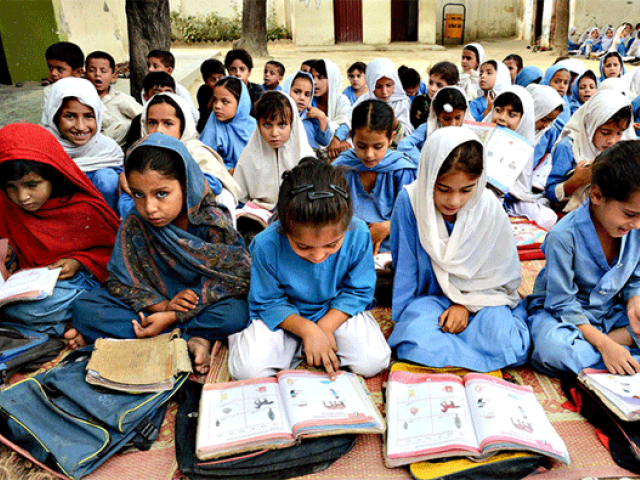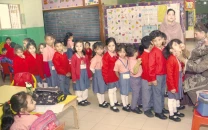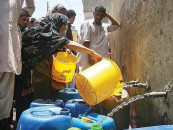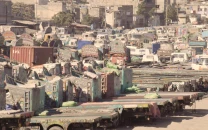Sindh needs to push up education budget
I-SAPS report suggests province needs to increase share by more than 20%

PHOTO: FILE
Sindh may be spending 20% of its total budget on education but, according to an Institute of Social and Policy Sciences (I-Saps) report launched on Wednesday, this is not sufficient.
The amount must be increased to at least 25% of the total budget if Sindh wishes to achieve the goals set forth when it passed the ‘Sindh Free and Compulsory Education Act 2013’. This calls for an allocation of Rs185 billion for the upcoming fiscal year 2016-2017.
Slow progress: Overall budget up but development allocation down

The report on Sindh’s education sector is accompanied by a set of proposals for the lawmakers, who are sitting down to set up budget targets for the upcoming year. I-Saps started giving budget proposals last year. “It is encouraging to note that a number of proposals were taken into consideration by the provincial government while formulating the budget for the financial year 2015-2016,” stated a note by I-Saps executive director Salman Humayun.
Free education: Provinces baulk at enforcing Article 25A
The report establishes that Sindh seems to be aware of its existing educational challenges since it prepared for the implementation of Article 25-A of the Constitution that guarantees free education to all children under 16 and allocated sufficient funds for teacher training.
There has also been a consistent increase in the budget allocated to the education sector. From Rs109 billion in 2012-2013, the education budget increased to Rs148 billion in 2015-2016. This amounted to 20% of Sindh’s total budget of Rs739 billion. I-Saps took this as a sign that the Sindh Education and Literacy Department is trying to make things better through various policies and initiatives taken by the department itself.
The report listed the Sindh Education Sector Plan, formation of District Education Groups, a school consolidation policy, teachers training programme and regular student assessments under Standardised Achievement Test as some examples of policies that have improved the education sector. Sindh has also managed to reduce the number of out-of-school children between the ages of five to 16 years from 7.3 million to 6.5 million.
Nevertheless, the province still needs to address the issue of missing facilities in school buildings, teacher absenteeism, ghost teachers and high dropout rates.
Bakhtawar inaugurates Cambridge school in Benazirabad
Where does the money go?
The Sindh government may be dutifully increasing the education budget every year - the current one being 7% more than last year’s - but there is an inefficient utilisation of resources since 42% of the development budget of the year 2014-2015 remained unspent.
A major chunk of resources goes to salary-related expenditures. In 2015-2016, 77% of the total current budget was allocated for salaries. The allocation of the budget between current and development expenses has also remained nearly the same in the past two years.

Primary education got the biggest share of the budget - Rs65 billion - in 2015-2016 followed by secondary and higher education. This was a 1% increase from the previous year. Secondary education received Rs42 billion this year, which was a 4% increase from the previous year. Meanwhile, the allocation for higher education saw a 3% decrease this year.
What to do?
The main focus of I-Saps recommendations was to make the Sindh education budget responsive and improve its quality. These proposals came forth after consultative meetings through an all-parties conference, post-budget dialogues with the stakeholders, discussions with the relevant government officials, political representatives, experts in the field of budget-making and international partners.
To successfully implement Article 25-A of the Constitution, the report proposed that the Sindh government allocate Rs185 billion towards education - a 25% rise from last year’s Rs148 billion. To improve Sindh Management Committee’s performance, it proposed that Rs1.5 billion should be allocated for the training of committee members and also to pilot a call-centre initiative in selected districts of the province.
The 18 recommendations also include budget provisions for missing facilities, non-salary expenditures, census of out-of-school children, district-based education planning and disaster risk reduction in education institutions.
Published in The Express Tribune, April 28th, 2016.



















COMMENTS
Comments are moderated and generally will be posted if they are on-topic and not abusive.
For more information, please see our Comments FAQ